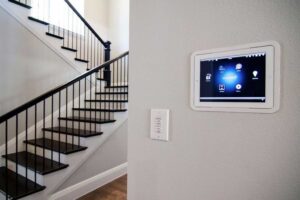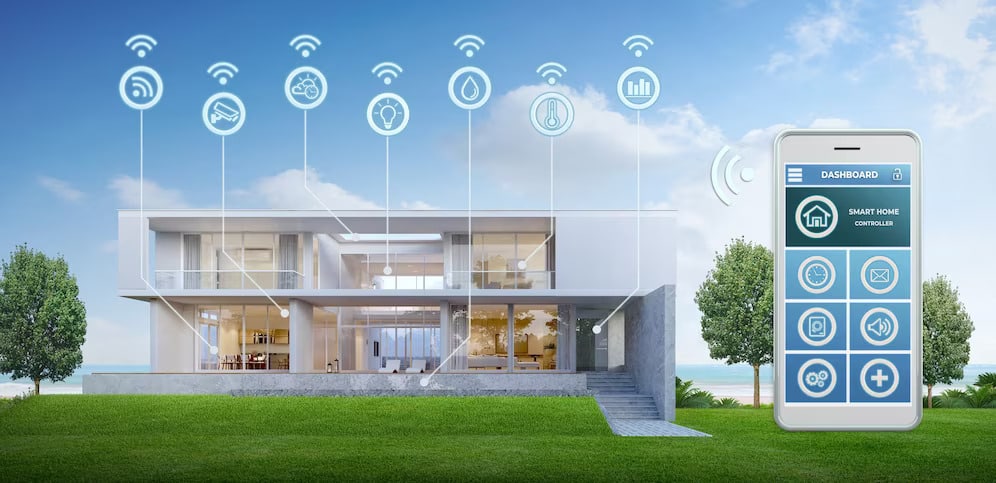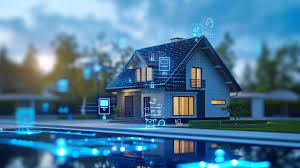Smart Home Automation The Future of Living
Smart home automation represents a significant leap in how we interact with our living spaces. By integrating advanced technologies, such as the Internet of Things (IoT), artificial intelligence (AI), and wireless communication, smart homes allow residents to control and automate various household functions with unprecedented ease. From adjusting lighting to managing security systems, smart home automation is transforming the way we live, making homes more efficient, secure, and comfortable.
Benefits of Smart Home Automation
Smart home automation offers a wide range of benefits that enhance the quality of life for homeowners. These advantages span convenience, energy efficiency, security, and even financial savings. Below, we outline the key benefits that make smart home automation an appealing choice for modern households.
Convenience and Comfort
One of the most immediate benefits of smart home automation is the convenience it provides. Imagine arriving home after a long day, and with a single voice command, your lights turn on, your thermostat adjusts to the perfect temperature, and your favorite music begins to play. Devices like Amazon’s Alexa, Google Home, and Apple’s HomeKit enable seamless control over multiple home systems, reducing the need for manual adjustments.
Smart home systems can also learn your habits and preferences. For example, a smart thermostat can analyze your daily routine and automatically adjust the temperature to suit your schedule, ensuring maximum comfort without requiring constant input.
Energy Efficiency
Energy efficiency is a cornerstone of smart home automation. Smart devices, such as LED lighting systems, smart plugs, and energy-monitoring thermostats, allow homeowners to reduce their energy consumption significantly. For instance, smart lighting systems can automatically turn off lights in unoccupied rooms, while smart thermostats can lower heating or cooling when no one is home.
According to studies, households with smart home systems can reduce energy usage by up to 30%, leading to lower utility bills and a reduced carbon footprint. This not only benefits homeowners financially but also contributes to global sustainability efforts.
Enhanced Security
Security is a top priority for any homeowner, and smart home automation provides robust solutions. Smart security systems include devices like video doorbells, motion sensors, and smart locks, which can be monitored and controlled remotely via smartphones or tablets. For example, a video doorbell can notify you of visitors and allow you to communicate with them from anywhere in the world.

Additionally, smart cameras with AI-powered facial recognition can distinguish between familiar faces and strangers, sending alerts if suspicious activity is detected. These systems provide peace of mind, knowing that your home is protected around the clock.
Cost Savings
While the initial investment in smart home devices can be significant, the long-term savings are substantial. Energy-efficient devices reduce utility bills, and smart security systems can lower insurance premiums by demonstrating proactive measures against theft or damage. Moreover, automation reduces wear and tear on appliances by optimizing their usage, extending their lifespan.
Key Technologies Powering Smart Home Automation
Smart home automation relies on a combination of cutting-edge technologies that work together to create a seamless and intelligent ecosystem. Below are the primary technologies driving this revolution.
Internet of Things (IoT)
The Internet of Things is the backbone of smart home automation. IoT refers to the network of interconnected devices that communicate with each other over the internet. In a smart home, IoT devices include everything from smart bulbs to connected appliances, all working together to create a cohesive system.
For example, a smart refrigerator can communicate with your smartphone to alert you when you’re running low on groceries, while a smart thermostat can sync with your weather app to adjust indoor temperatures based on external conditions.
Artificial Intelligence and Machine Learning
AI and machine learning enable smart home devices to learn from user behavior and make intelligent decisions. For instance, a smart speaker like Amazon Echo uses natural language processing to understand and respond to voice commands. Over time, these devices become more adept at predicting user needs, such as suggesting recipes based on available ingredients or adjusting lighting based on time of day.
Wireless Communication Protocols
Smart home devices rely on various wireless protocols to communicate, including Wi-Fi, Bluetooth, Zigbee, and Z-Wave. Each protocol has its strengths: Wi-Fi offers high-speed connectivity, while Zigbee and Z-Wave are designed for low-power, short-range communication, making them ideal for battery-operated devices like sensors and smart locks.
Cloud Computing
Cloud computing allows smart home systems to store and process vast amounts of data, enabling remote access and control. For example, cloud-based platforms like Google Home or Apple HomeKit store user preferences and device data, ensuring that you can control your home from anywhere with an internet connection.
Implementing Smart Home Automation
Setting up a smart home may seem daunting, but with the right approach, it can be a straightforward process. Below, we outline the steps to implement smart home automation effectively.
Assess Your Needs
Begin by identifying which aspects of your home you want to automate. Common starting points include lighting, heating/cooling, security, and entertainment systems. Consider your budget, lifestyle, and long-term goals to prioritize which devices to invest in.
Choose Compatible Devices
Ensure that the devices you select are compatible with each other and with a central hub or platform, such as Amazon Alexa, Google Home, or Apple HomeKit. Compatibility ensures seamless integration and control.
Install and Configure Devices
Most smart home devices are designed for easy installation, often requiring only a smartphone app and a Wi-Fi connection. Follow manufacturer instructions to set up devices and connect them to your chosen platform. For complex systems, such as smart security or HVAC systems, professional installation may be recommended.
Create Automation Routines
Once devices are installed, create automation routines to streamline tasks. For example, set your lights to turn on at sunset or program your thermostat to lower the temperature when you leave for work. Most smart home platforms allow you to customize routines via their apps.
Test and Optimize
After setting up your smart home, test the system to ensure everything works as expected. Make adjustments as needed to optimize performance and user experience. Regularly update device firmware to maintain security and functionality.
Challenges of Smart Home Automation
While smart home automation offers numerous benefits, it also comes with challenges that homeowners should be aware of.
Cost
The upfront cost of smart home devices can be a barrier for some. High-quality devices, such as smart thermostats or security cameras, can be expensive, and outfitting an entire home may require a significant investment.
Compatibility Issues
Not all smart home devices work seamlessly together. Different brands may use different protocols, leading to compatibility issues. Researching and selecting devices that support common standards like Zigbee or Z-Wave can mitigate this problem.
Security and Privacy Concerns
Smart home devices are vulnerable to cyberattacks if not properly secured. Hackers could potentially access cameras, locks, or other devices, compromising your privacy. To address this, use strong passwords, enable two-factor authentication, and keep devices updated.
Complexity
For some users, the complexity of setting up and managing a smart home can be overwhelming. Simplifying the setup process and choosing user-friendly platforms can help alleviate this issue.
The Future of Smart Home Automation
The future of smart home automation is bright, with emerging technologies poised to take it to new heights. Advances in AI will make devices even smarter, enabling them to anticipate user needs with greater accuracy. For example, future smart homes may predict when you’re likely to arrive home based on your calendar and traffic data, adjusting settings accordingly.
Integration with renewable energy sources, such as solar panels, will further enhance energy efficiency. Smart homes may also incorporate augmented reality (AR) for intuitive control interfaces or advanced health-monitoring systems to support aging populations.
As 5G networks become more widespread, smart home devices will benefit from faster and more reliable connectivity, enabling real-time data processing and more complex automation routines. Additionally, standardization efforts in the smart home industry, such as the Matter protocol, aim to improve device interoperability, making it easier to build cohesive smart home ecosystems.
In conclusion, smart home automation is revolutionizing the way we interact with our homes. By offering convenience, efficiency, and security, it has become an integral part of modern living. While challenges remain, ongoing advancements in technology promise to make smart homes even more accessible and powerful in the years to come.






